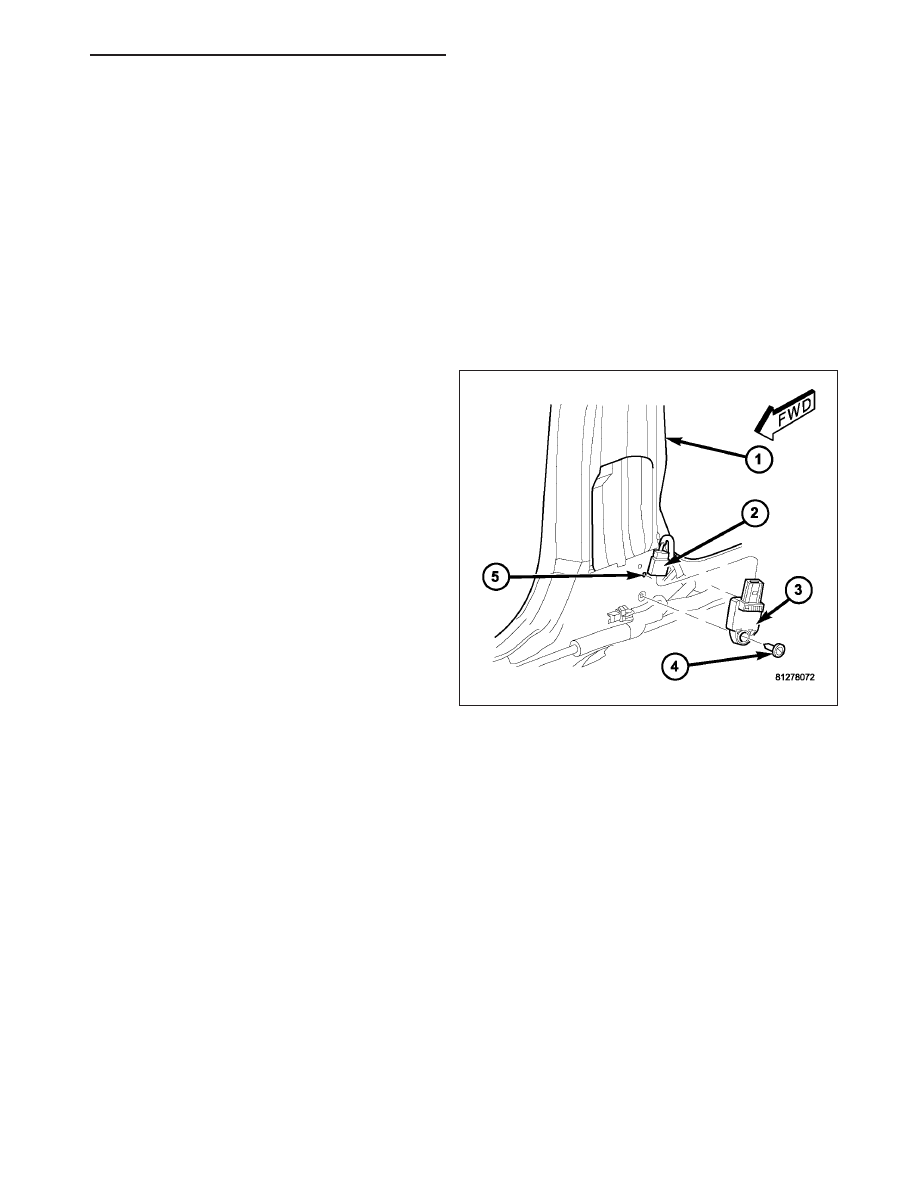Dodge Durango (HB). Manual - part 555

SIDE - B-PILLAR
WARNING: To avoid personal injury or death, on vehicles equipped with airbags, disable the supplemental
restraint system before attempting any steering wheel, steering column, airbag, occupant classification sys-
tem, seat belt tensioner, impact sensor, or instrument panel component diagnosis or service. Disconnect
and isolate the battery negative (ground) cable, then wait two minutes for the system capacitor to discharge
before performing further diagnosis or service. This is the only sure way to disable the supplemental
restraint system. Failure to take the proper precautions could result in accidental airbag deployment.
WARNING: To avoid personal injury or death, never strike or drop the side impact sensor, as it can damage
the impact sensor or affect its calibration. The side impact sensor enables the system to deploy the side
curtain supplemental restraints. If an impact sensor is accidentally dropped during service, the sensor must
be scrapped and replaced with a new unit. Failure to observe this warning could result in accidental, incom-
plete, or improper front supplemental restraint deployment.
1. Check to be certain that the rivet nut used to
secure the side impact sensor (3) is properly
installed in the inner B-pillar (1), and that it is in
good condition.
2. Position the side impact sensor near the inner
B-pillar.
3. Reconnect the body wire harness connector (2) to
the sensor connector receptacle.
4. Position the sensor onto the inner B-pillar. Be cer-
tain that the anti-rotation pin on the back of the
sensor is engaged in the clearance hole (5) of the
B-pillar.
5. Install and tighten the screw (4) that secures the
sensor to the inner B-pillar. Tighten the screw to 6
N·m (50 in. lbs.).
6. Reinstall the lower trim onto the inside of the B-pil-
lar. (Refer to 23 - BODY/INTERIOR/B-PILLAR
LOWER TRIM - INSTALLATION).
7. Do not reconnect the battery negative cable at this time. The supplemental restraint system verification test pro-
cedure should be performed following service of any supplemental restraint system component. (Refer to 8 -
ELECTRICAL/RESTRAINTS - STANDARD PROCEDURE - VERIFICATION TEST).
SIDE - C-PILLAR
WARNING: To avoid personal injury or death, on vehicles equipped with airbags, disable the supplemental
restraint system before attempting any steering wheel, steering column, airbag, occupant classification sys-
tem, seat belt tensioner, impact sensor, or instrument panel component diagnosis or service. Disconnect
and isolate the battery negative (ground) cable, then wait two minutes for the system capacitor to discharge
before performing further diagnosis or service. This is the only sure way to disable the supplemental
restraint system. Failure to take the proper precautions could result in accidental airbag deployment.
WARNING: To avoid personal injury or death, never strike or drop the side impact sensor, as it can damage
the impact sensor or affect its calibration. The side impact sensor enables the system to deploy the side
curtain supplemental restraints. If an impact sensor is accidentally dropped during service, the sensor must
be scrapped and replaced with a new unit. Failure to observe this warning could result in accidental, incom-
plete, or improper front supplemental restraint deployment.
HB
RESTRAINTS - SERVICE INFORMATION
8O - 489